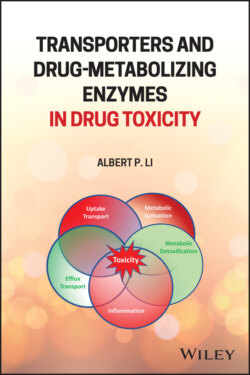Читать книгу Transporters and Drug-Metabolizing Enzymes in Drug Toxicity - Albert P. Li - Страница 31
2.3.4.2 Electrophile Trapping Experiments
ОглавлениеElectrophile trapping is the primary approach for screening RMs in the early phase of drug discovery without involving a radioactive drug. Normally it requires the addition of trapping agents (i.e. GSH) to microsomal incubation followed by liquid chromatography mass spectrometry (LC‐MS) analysis. This approach also helps indicate which metabolite structure is responsible for this reactivity and characterizes the mechanism of covalent binding. It generates the stable trapping adducts and/or conjugates of electrophilic RMs using nucleophilic trapping reagents or in vitro incubation, along with hepatic microsome and cellular, animal, and human studies. The biological nucleophile GSH is the most frequently‐used nucleophile reagent, commonly used for trapping soft electrophiles (e.g. epoxides, quinones, and quinone methides). For certain hard electrophiles with high charge density and high polarization, hard nucleophiles such as cyanide anion (CN−) are preferred because the GSH adducts are unstable and GSHs have limited trapping efficiency.
Following in vitro incubations, various analytical approaches such as LC‐MS, fluorescence or radiochemical detection could be used to analyze the trapped adducts and/or conjugates of RMs. Mass spectrometric methods are the most common approach. Taking advantage of specific fragmentation behavior of the peptide moiety of nucleophilic trapping reagents, stable trapping adducts, and/or conjugates of electrophilic RMs can be detected and characterized. For example, the neutral loss of 129 Da is commonly used by positive ion electrospray‐tandem mass spectrometry to provide a generic endpoint for GSH trapping and measurement. Without using the radiolabeled drugs, this protocol can provide semi‐quantitative estimates of adduct formation for RMs.
